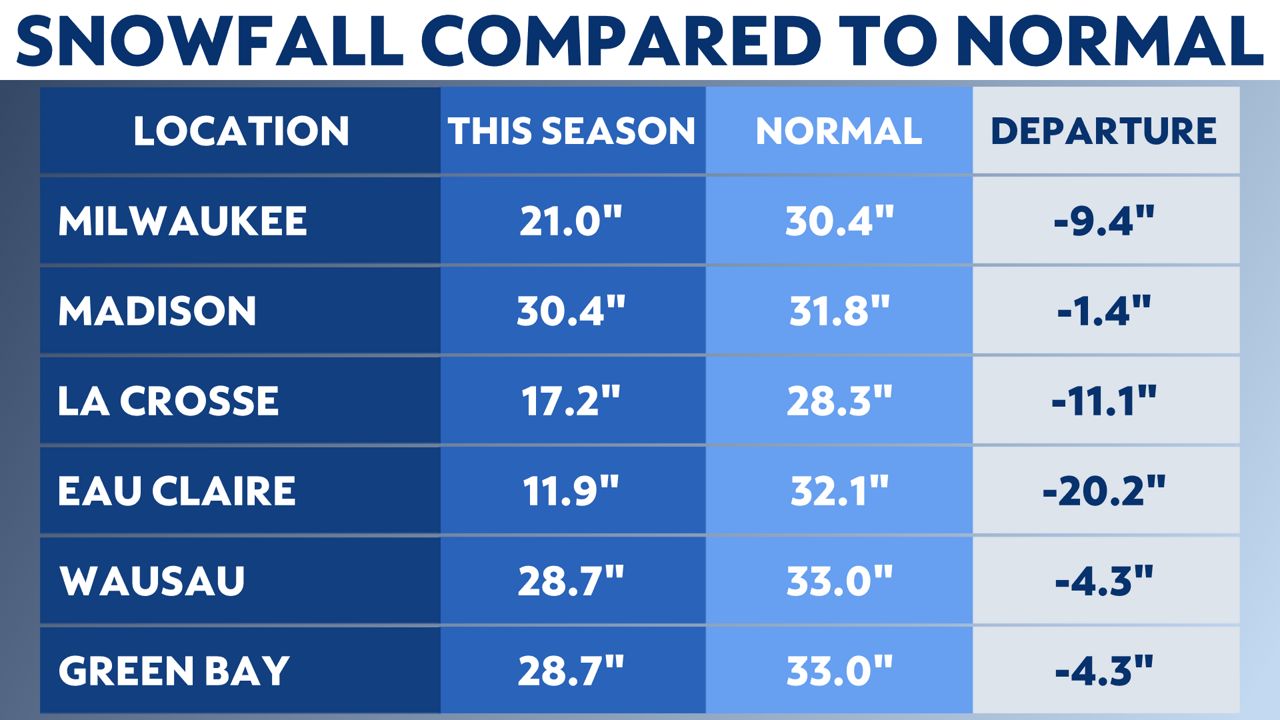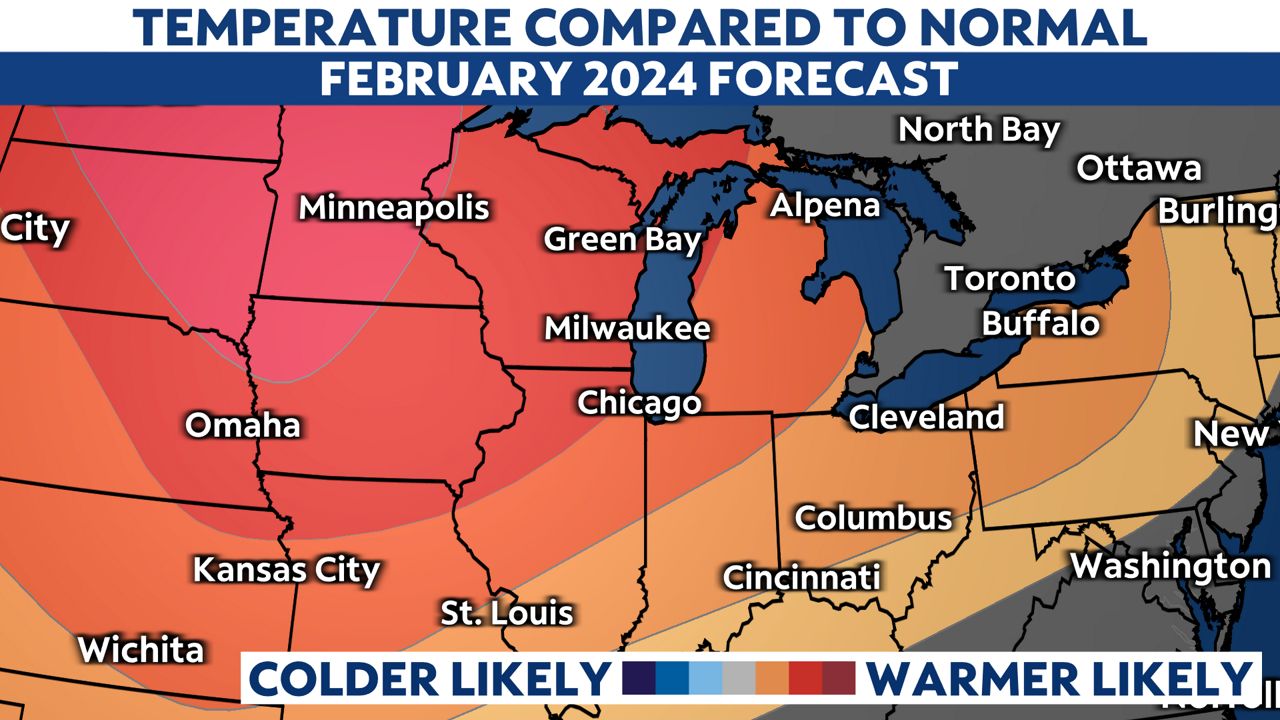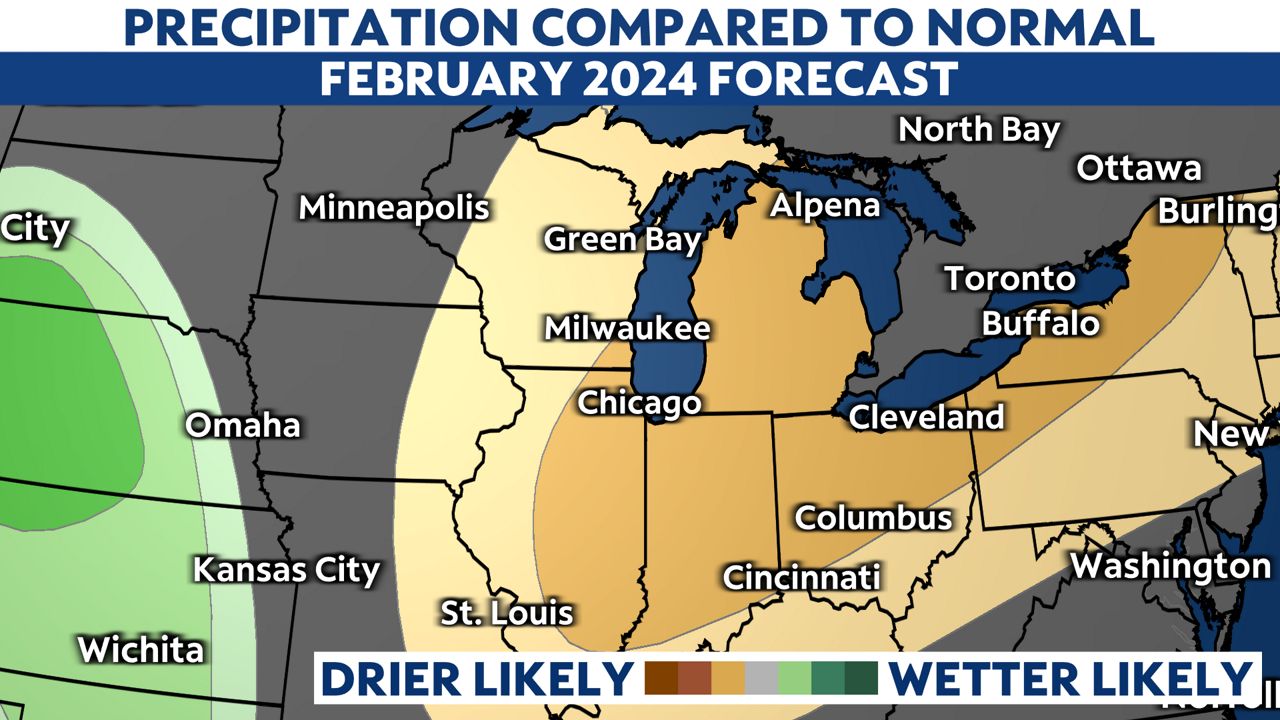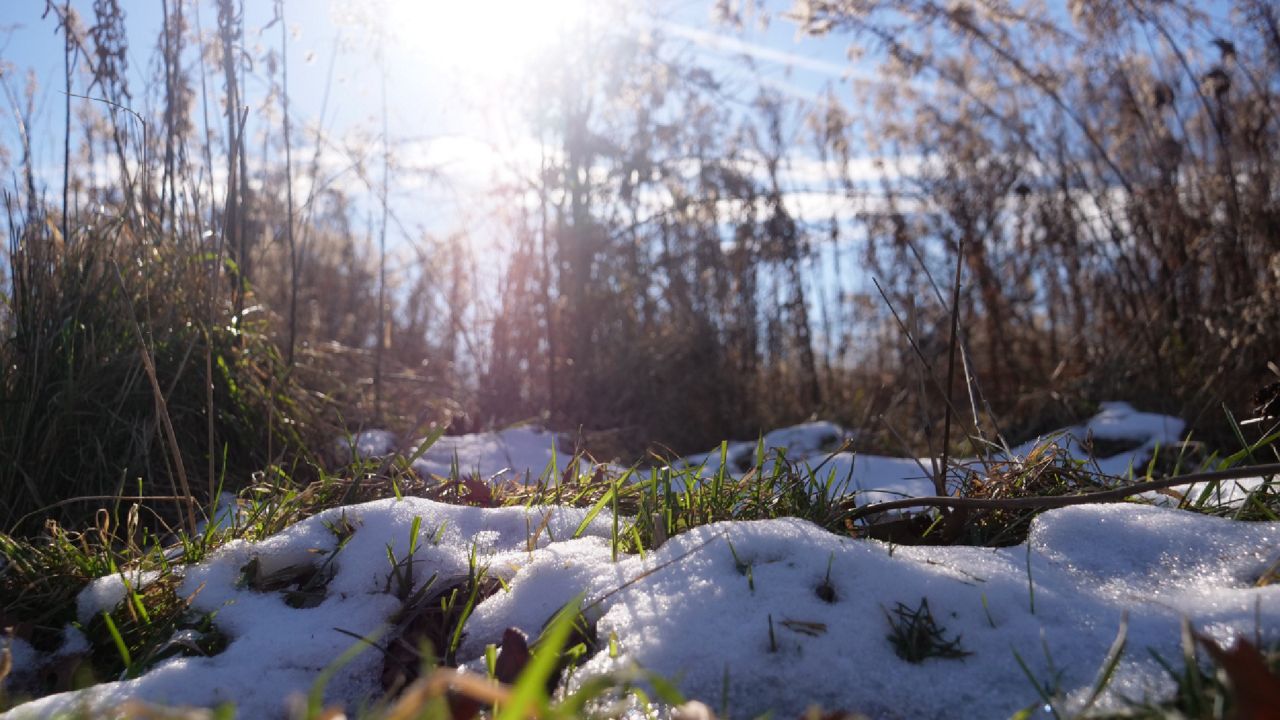The mild temperatures we had to end January have continued into February, creating a bit of a snow drought across the state, so how are snow totals stacking up now that the first half of winter is behind us?
Temperatures across Wisconsin have felt anything but winter-like over the last few weeks and the warmer air has done a number on the snowpack around the state.
The melting snow and thawing ground has many Wisconsinites wondering if winter is over. While we still have the second half of winter to go, there’s not much potential for accumulating snow on the horizon.
So far this season, total snowfall accumulation is well below normal in most cities in Wisconsin. Milwaukee measured 21 inches of snow, which is over 9 inches below normal.
Eau Claire, one of our typically snowier cities, has only measured 11.9 inches of snow, which is over 20 inches below normal for the season.
Here’s a look at seasonal snowfall totals compared to normal so far:

Most of our seasonal snowfall happened between two storm systems during the same week in January on Jan. 9-10 and 12-13.
Looking ahead, it does not appear as if the weather will be favorable for accumulating snowfall.
The Climate Prediction Center (CPC) released their monthly temperature forecast for February and temperatures across the Midwest and Great Lakes are expected to be much warmer than normal for this time of year.

The CPC’s monthly precipitation forecast for February also shows a high probability of lower than normal precipitation chances.

Does this mean winter is officially over? The short answer is no. If you remember back in 2023, many of us experienced our highest snowfall totals in March when two rounds of heavy, wet snow blanketed much of the state.
While many things may change between now and the official end of winter, remember that it is not uncommon to see accumulating snowfall in Wisconsin in March and April.
February may be looking warmer and drier than normal, but we will still have to wait and see what March has in store for us.
Our team of meteorologists dives deep into the science of weather and breaks down timely weather data and information. To view more weather and climate stories, check out our weather blogs section.



